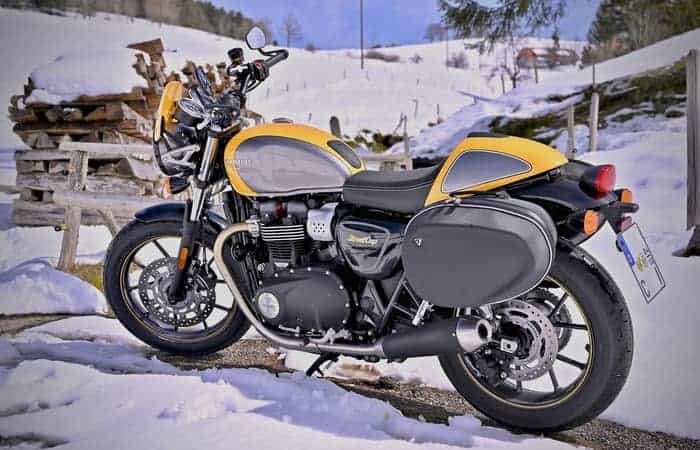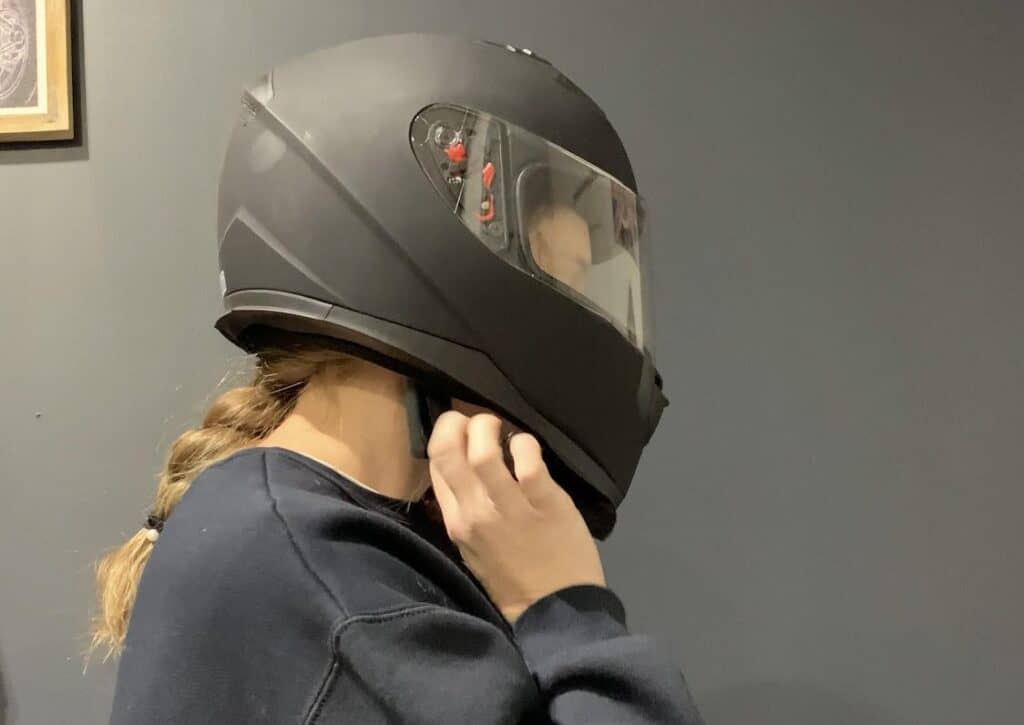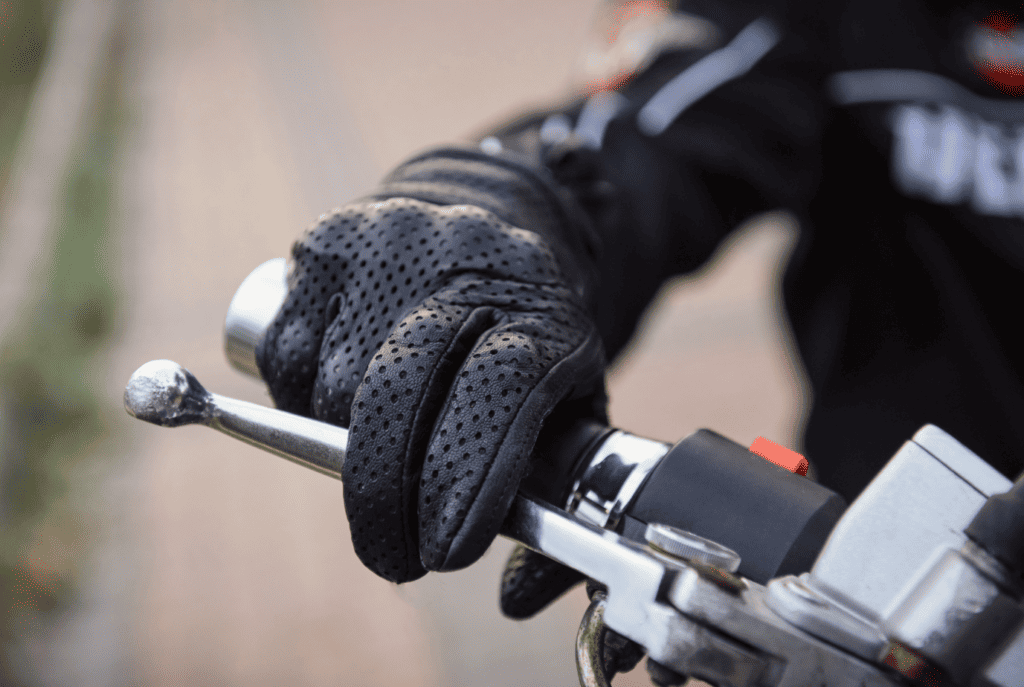
Knowing when it’s too cold to ride a motorcycle has a lot to do with personal preference and what you feel comfortable doing, but there are some general rules and safety that go into what the limits are. I learned how to ride a motorcycle in Utah and Idaho, both of which have extremely harsh winters, so I have experience with winter riding.
So how cold is too cold to ride a motorcycle? It is not recommended to ride a motorcycle when the temperature is below freezing (32°F or 0°C). Ice will form at these temperatures and motorcycles are more susceptible when ice is present. If you absolutely must ride in freezing temperatures, make sure you have the proper gear to keep you warm.
Unless it is absolutely necessary, I wouldn’t recommend anyone riding a motorcycle during extremely cold or harsh conditions. You are more likely to hit ice, slide, and get into an accident if you ride during such conditions. However, riding in the winter is possible if it’s above freezing which will be explained throughout the rest of this article.
Air Temperature vs. Ground Temperature
Monitoring both the air and ground temperature during the winter months is important if you plan on riding your motorcycle. Both can be dangerous for different reasons and shouldn’t be taken for granted.
Riding a motorcycle when the air temperature is below freezing is very dangerous without proper gear because hypothermia can set in quickly. Our bodies have a natural internal temperature of 98.6 °F or 37°C, and if this temperature drops to 95 °F or 35°C, then hypothermia sets in.
As you’re riding down the road in cold air, that air is constantly taking away heat from your body at a faster rate than your body can produce it. So your internal temperature starts to get lower and lower.
I do not ride when the air temperature is below freezing. First and foremost because it’s not enjoyable to me anymore. I’d rather be in a warm car in a t shirt and jeans than trying to constantly keep the motorcycle away from icy patches on the road.
It’s also important to monitor the ground temperature before you go out on a ride. If there is standing ice or snow anywhere on the road then it’s not recommended to ride your motorcycle on the streets. The news is full of horrific stories of motorcycle riders losing control on icy roads and getting hit by other vehicles.
If the ground temperature is below freezing, then I do not go out for a ride; if any rain or snow happens while I’m out, it will almost instantly freeze when it settles on the road and will create extremely dangerous riding conditions.
To have an idea of what the ground temperature is, you can use an instant-read thermometer made for cooking and probe it into some exposed soil.
In many parts of the world, the most dangerous part of driving in the winter is a phenomenon called “black ice.” This happens when the temperature stays below freezing for days at a time and ice on the road gets compressed more and more. It’s almost impossible to see and can immediately turn a car or motorcycle sideways.
Understand Your Own Limitations
One of the biggest factors in trying to know when it’s too cold to ride your motorcycle is listening to that voice inside your head that tells you what your gut feeling is. If you have to debate within yourself whether it’s too cold to go out riding your motorcycle then stay on the safe side and wait for another day.
If you’ve never ridden your motorcycle in extremely cold conditions and you really want to get some practice doing it, then stick to small back roads and go slow. Just like learning how to ride a motorcycle for the first time, learning how to ride in cold conditions takes practice and experience.
Also know the limitations of your motorcycle. Many carbureted motorcycles are going to spit and sputter and not run as well in the cold, so take that into account when deciding whether you want to venture out onto the open road.
If your motorcycle has slick tires then I would not attempt to ride in below freezing temperatures. Slick tires don’t ride well on ice or snow, and the rubber becomes even more stiff and grips less in the cold. Make sure you have tires with a more aggressive tread if you want to ride in the cold.
Proper Gear Is A Must

Gauging whether or not it is too cold to ride your motorcycle has a lot to do with the quality of the gear you’ll be wearing. A leather riding jacket provides the most road rash protection during an accident but it’s not the best choice when riding in the winter to protect against the cold. If you’re going to wear your leather jacket through the winter, then make sure you wear a long sleeve shirt underneath it for better insulation.
A better jacket choice would be a winter riding jacket. There are a lot of good jackets out there made for motorcycle riders that have both good insulation properties and good road rash protection.
Do not ever ride a motorcycle in cold weather without full finger gloves. Your fingers will freeze within minutes and your response time will be slowed down. I was once riding in the winter and was only going a few miles so I figured I didn’t need gloves. When I got to my destination, my left hand was so frozen that I couldn’t pull in the clutch handle and I had to stall my motorcycle to get it to stop.
When riding in temperatures below about 50 °F, I would recommend wearing some thermal underwear under your jeans to keep your legs warm. Riding with cold legs is miserable and the cold air will make your legs cramp up and become stiff. See my guide here on how to keep your legs warm on a motorcycle.
Proper riding boots should always be worn when riding a motorcycle, and I would recommend wearing the same pair of boots year round as long as they are waterproof. In addition to your choice of boots is your choice of socks. Be sure to choose some that will keep your feet nice and warm.
I also once rode in the winter without my helmet on (I know, it was a dumb choice) and the cold air froze water around my nostrils and made my eyes burn after only a minute. Riding a motorcycle without a helmet is dangerous, and even more dangerous when it’s cold. So always have a helmet on and make sure the visor has anti-fog applied on the inside.
On top of wearing the appropriate gear, it’s a good idea to get yourself coverage with good motorcycle insurance. This is a must while riding in cold and risky conditions. You can click here to see a list of motorcycle insurance agencies near you and compare rates.
Don’t Trust All The Cold Weather Advice You Read Online
There are many forums online where people say the coldest temperatures they’ve ridden a motorcycle in and say things like, “I ride my motorcycle through the winter every year and I’ve never had a problem.” All it takes is one second of ice that can change your whole life. Don’t listen to extreme riders.
Someone once told me that they regularly ride through -18 °F weather, and honestly I’m not sure if I believe them. And even if that is true, they should have enough sense to not do it anymore. That’s not recommended to ever ride in conditions like that.
The best source of information for riding in cold weather would be to ask people who live in your city. They have a better understanding of your local road conditions and are more likely to give you an honest answer as to what is or isn’t too cold of conditions to ride your motorcycle.
Extra Tips To Staying Warm

There are some pretty cool tools and gadgets that you can use to stay warm when riding in the cold. Such items include:
- Hand warming packets
- Electric hand warming gloves and jackets
- Electric heated seats
- Heated helmets
- Heated motorcycle grips
- Waterproof insulated riding pants
One other cheap trick I learned when I was a poor college student was to put on a warm pair of socks, then put a grocery bag over my feet and then put my boots on. My boots weren’t waterproof so the plastic bag helped my feet stay dry.
Once you get wet it’s a lot harder to keep your body warm and then things can get dangerously cold very quickly. For more tips on how to stay warm on your motorcycle, you can read our other article by clicking here.
Keep Extra Distance Away From Other Vehicles
When riding in cold conditions, it’s important to stay even further away from other vehicles since it will take longer for both you and them to come to a full stop. The rubber compound of your tires gets stiff in cold weather and they don’t have as good of traction, and that makes your braking distance increase.
That’s why racing motorcycles have tire warmers wrapped around their tires before races, they’re trying to increase the rubber temperature so it has more bite on the track.
Many drivers in cold weather will have ice and snow buildup on their windshields and have very poor visibility, that’s why it’s important to keep your distance and be extra careful about riding around cars in the winter.
Try to avoid other people’s blind spots and riding directly next to someone. Additionally, avoid drivers who drive really close behind you, just let them pass. Always stay in the left-most or right-most lane so you only have to pay attention to one lane of traffic that could merge into you.
Conclusion
Riding a motorcycle in the winter is certainly possible, but there are limits. If the temperature is at 32 degrees Fahrenheit or colder, consider that too cold to ride your motorcycle. Ice, moisture, and other drivers are a huge risk to you as a rider and you should wait until the temperatures are more optimal. If you must ride in such conditions, always make sure you are warm and well taken care of so you are in the right mindset to react quickly if needed.
Good luck with your winter riding endeavors and please be safe out there!
Related Question
What is the best jacket for winter riding? Any waterproof jacket with decent insulation properties will work as a winter riding jacket. There are special winter riding jackets made for both protection from the road and temperatures. Always wear a long sleeve shirt underneath for better insulation and to keep your body dry.
When do most motorcycle accidents happen? Most motorcycle accidents happen during some sort of big holiday. Memorial day, the 4th of July, and Labor day hold the highest records of motorcycle accidents throughout the year with New Year’s and Thanksgiving coming in second.

